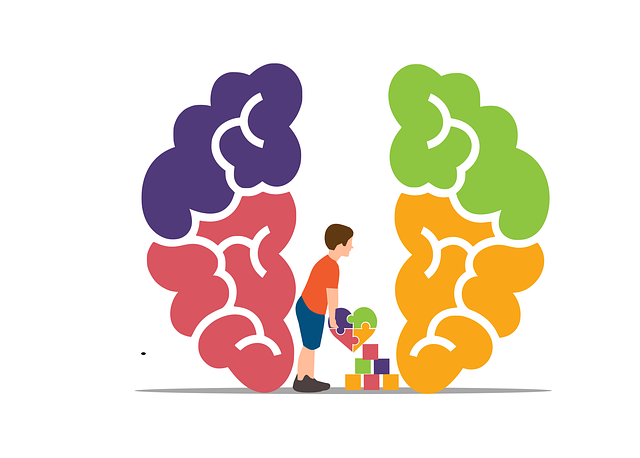Understanding Mental Health Data through various collection methods, like digital tools and clinical records, is crucial for navigating mental wellness. Northglenn Suicide Prevention Therapy leverages structured and unstructured data sources to assess community mental health status, risk assessment, and foster targeted interventions. Analyzing historical data on self-care practices and therapy accessibility reveals key factors contributing to the community's resilience against suicidal ideation. The case study highlights successful interventions like Mind Over Matter principles, open conversations about mental health, and tailored outreach programs, ensuring everyone has access to suicide prevention resources. Data interpretation empowers professionals and policymakers to tailor therapy approaches and implement evidence-based practices for comprehensive mental well-being support.
Mental health data analysis is a powerful tool for understanding complex issues like suicide prevention. This article explores critical aspects of this process, focusing on Northglenn as a case study. We delve into the collection and sources of mental health data, analyzing trends in suicide rates to inform effective therapy and policy changes. By examining real-world examples, such as Northglenn’s initiatives, we highlight how data interpretation can drive meaningful improvements in community well-being, particularly regarding suicide prevention strategies.
- Understanding Mental Health Data: Collection and Sources
- Analyzing Suicide Prevention Trends in Northglenn: A Case Study
- Interpreting Data for Effective Therapy and Policy Changes
Understanding Mental Health Data: Collection and Sources

Understanding Mental Health Data is a crucial step in navigating the complex landscape of mental wellness and offering effective support. Collection methods vary widely, from traditional clinical records to innovative digital tools designed to track and analyze individual and community mental health trends. These include surveys, online platforms, wearable devices, and mobile apps that capture data on sleep patterns, stress levels, and mood changes. For instance, Northglenn Suicide Prevention Therapy leverages these tools to gather insights into the mental health status of its community.
The sources of such data are diverse, encompassing both structured (clinical interviews, standardized questionnaires) and unstructured (social media posts, online forums) formats. Public Awareness Campaigns Development plays a significant role in encouraging open dialogue and increasing participation in data collection efforts. Simultaneously, Risk Assessment for Mental Health Professionals benefits from this data to identify at-risk individuals and develop targeted interventions, ultimately enhancing mental health services and contributing to broader Mental Health Awareness initiatives.
Analyzing Suicide Prevention Trends in Northglenn: A Case Study

In Northglenn, a vibrant community dedicated to mental wellness, analyzing suicide prevention trends offers valuable insights into effective support strategies. This case study delves into the unique challenges and successful interventions that have shaped the city’s approach to safeguarding its residents’ mental health. By examining historical data on self-care practices and mental health therapy accessibility, researchers identified key factors contributing to the community’s resilience against suicidal ideation.
The analysis highlights the importance of integrating Mind Over Matter principles into local initiatives. This involves fostering a culture where open conversations about mental health are encouraged, and individuals are equipped with practical burnout prevention strategies for healthcare providers. The case study also underscores the significance of tailored interventions, such as community outreach programs targeting at-risk groups, and the role of technology in providing accessible therapy options, ensuring that everyone, regardless of their circumstances, has access to Northglenn’s suicide prevention resources.
Interpreting Data for Effective Therapy and Policy Changes

Interpreting data is a powerful tool for mental health professionals and policymakers alike. By delving into trends and patterns within collected data, practitioners can tailor therapy approaches to individual needs, ensuring more effective treatment outcomes. This precision in care not only benefits patients but also contributes to shaping evidence-based practices that resonate with diverse populations, including those in Northglenn Suicide Prevention Therapy.
Moreover, mental health policy analysis and advocacy can be significantly influenced by data interpretation. Identifying systemic issues through comprehensive data examination enables policymakers to implement targeted community outreach program implementations and compassion cultivation practices. Such strategies foster a supportive environment, empowering individuals and communities to take charge of their mental well-being and driving positive change on a broader scale.
Mental health data analysis plays a pivotal role in understanding and addressing critical issues like suicide prevention. As demonstrated through the case study of Northglenn’s suicide trends, interpreting this data can drive significant policy changes and enhance therapy strategies. By leveraging collected mental health data from various sources, professionals can identify patterns, pinpoint at-risk populations, and implement targeted interventions. This evidence-based approach ultimately fosters more effective support systems for individuals in need, particularly focusing on Northglenn Suicide Prevention Therapy initiatives.














